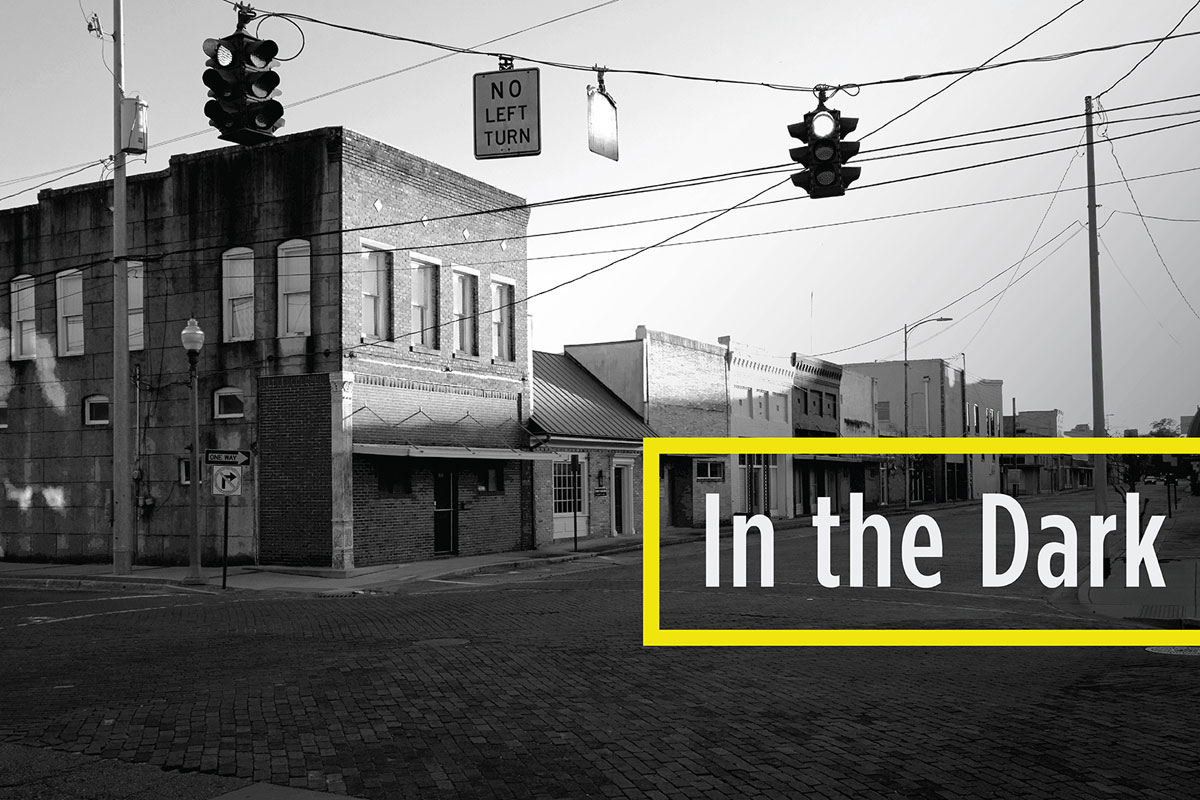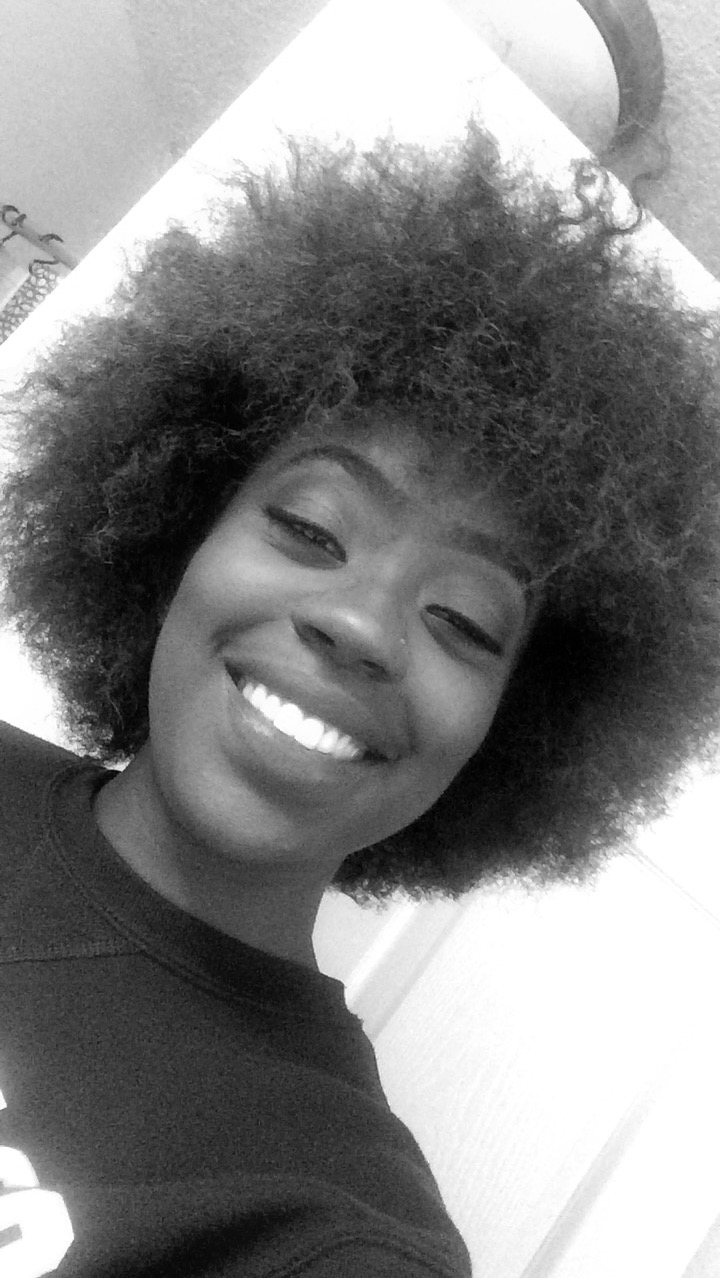Curtis Flowers, who until recently was facing execution in Mississippi for allegedly killing four people inside a furniture store in Winona, is the reason the “In the Dark” podcast is familiar to many Mississippians. Investigative reporter Madeleine Baran led the 2018 investigation revealing questionable legal handling of Flowers, who was tried six times before being convicted. Baran’s work and the widely heard podcast raised the questions that eventually helped Mississippi attorney Rob McDuff get Flowers’ conviction overturned. Now Flowers is free, awaiting his seventh trial.
Meantime, Baran has turned her attention again to Mississippi, debuting “Coronavirus in the Delta,” the latest podcast series for “In the Dark,” which is going beyond the virus itself, its statistics and policy implications, and looking at those who are coping with their new normal. The series focuses on the different experiences of people living through the COVID-19 pandemic, including athletes, pastors and prison inmates.
“This is a story of a time of tremendous trouble, but also tremendous resilience, especially in the stories that we’re telling.” — Madeleine Baran
The series premiered April 30 and will air every Thursday across podcast streaming platforms. Baran, a Milwaukee, Wis., native, spoke with the Mississippi Free Press about the first episode that dropped last week,“Greenville” follows two pastors’ fight against a mayor and city ordinance that would prohibit their right to worship.
What was it about the Mississippi Delta or the people there that made you say, “Huh, we should do a series here tracking how people are coping with COVID-19”? Because you could have gone to any state or region in the country.
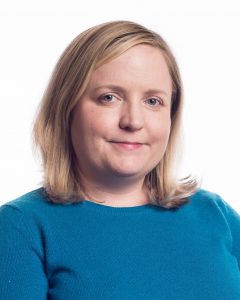
I think one of the reasons was because we had already lived in Mississippi while reporting on Curtis Flowers’ case. We were hearing from people in the Delta and areas around the Delta, and so that was interesting to us to hear directly from people we knew about how they were doing. It’s the place that we knew to report in, so it never occurred to me to do a different place. We were hearing from there.
We weren’t seeing anyone outside of Mississippi doing that kind of reporting on what life was like there. We also weren’t seeing a whole lot of reporting in general about what daily life is like, like the smaller-scale stories about how life has changed. We thought those were important to document, too.
It was going to be interesting to see how the Mississippi Delta confronted this pandemic given all the resilience of the people there, but also all of the challenges in the Delta. We thought that combination of following people who had already been through hard times, who would be uniquely equipped to cope with that, but also the reality is a lot of people with a lot of challenges. That combination we also thought was interesting to see in this time where all of us are under so much stress. Just to look at it in this one particular place.
You’re in Minnesota right now. So how would you compare your experience to that of the people in the Delta, a rural area?
I think Minnesota has done a lot of social distancing, and we’re under a stay-at-home order, although I believe it’s being partially lifted. Probably similar to Mississippi in the big sense that neither of us are living in the type of situation that has what New York has going on.
How do you begin a project like this? Where do you start, and who do you call first, particularly with this episode that starts one way, but then seems to take on a life of its own?
I think our team has been working remotely since March 11. A little bit into that disorienting time for everyone, we settled on this idea for a story. We contacted some people that we knew from there and asked them to refer us to other people, kind of the normal reporting process.
Then Natalie Jablonski, a producer on our show called up Dr. (Satwinder) Singh, who you hear in the first episode, and was talking to him about the situation in Greenville. We had been talking to him for a little while when we saw a Facebook video that this man had made of himself getting fined at a church in Greenville. We thought about how we had talked to Dr. Singh and other people in Greenville and this situation with the drive-in services happening, we thought it would be interesting to look at Greenville and combine these two things.
On the one hand, you’ve got this city that, according to Dr. Singh, wasn’t doing enough, then started doing a lot and according to those pastors, maybe started doing too much. We thought that was interesting to look at because we’re all living in this time that none of us are fully prepared for. We’re not epidemiologists. We’re not all infectious disease specialists. I think everyone is being forced to act quickly and make these big decisions, and this is a hard decision to make, what exactly to do, when you get down to the details of what to do in a city. Abstractly, we know what to do: wash our hands, maintain distance from other people. But when you try to make policies around it, it gets complicated, and I think this story shows that.
I know you just wrapped editing on the first episode, and a lot of these interviews are as recent as Easter, which wasn’t that long ago. How is the interviewing process going as the episodes go along? When do you know or feel like you’ve reached the conclusion of a story or that you have enough?
For us, we’ve really been capturing moments in time. Really what we’re doing is there’s this unfolding story that’s bigger than any one of us, and we’re jumping into and trying to capture individual moments that we think are interesting or important in that story, if that makes sense. We’re not trying to tell the complete story of the virus from beginning to end. We’re checking in with individual people and individual stories and following them for a time. Throughout the series, if anything major happens to any of the people in the stories that you’ll hear, we’ll also go and tell people about that while the series is still coming out.
How long will the series be?
Right now, the plan is six episodes, and you can kind of hear from the montage tape that this involves all kinds of different stories. Stories about musicians, stories about football players, stories about prisoners, other stories, stories about medical issues, stories of doctors and nurses.
How important is it for you to have a variety of stories?
Very important because this is a medical story, of course. But it’s affected every part of our lives, so I think what was interesting to us about this series was to try to do something a little bit different. To try to look at the ways in which coronavirus has affected parts of our lives that we don’t see reflected in the news all that much (like) looking at how this affects a football team, for example. That was really interesting to me. Of course, it’s not the most high-stakes situation.
On the other hand, this is the reality of the world we’re living in now. Everyone is experiencing this disorienting moment in different ways and to different degrees, but we thought it was important to document those ways that weren’t life and death but were still important and certainly important to the lives of people living them.
I hope that when people think about listening to the series that they get the sense that it’s not going to be a series that is really hard to listen to, that it’s going to be incredibly sad, that there’s all types of moments that were captured. Yes, there are sad moments, but there are also moments of levity, moments of confusion or even moments of humor. Because that’s really the reality of how we cope with something this traumatic and this large … it is varied. There are different ways that people are experiencing this. Some people have lost loved ones, other people have lost their jobs, other people are struggling in other ways, other people are trying to make something of this moment and themselves.
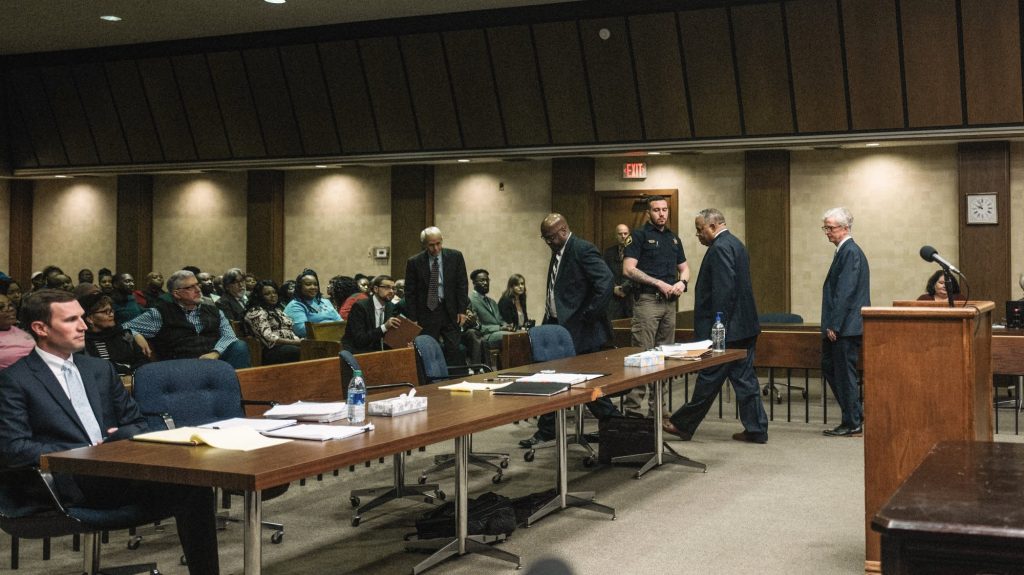
I think we’re getting so overwhelmed with news about it because mostly what you see is number updates about how many cases we have or who is dying. A lot of people are looking for distractions, which I think listening to this, it’s an interesting take on looking at coronavirus, especially looking at individual stories.
It’s definitely hard to read the same stories—and the stories are important—but we hope that even people who feel like they can’t handle certain stories would find something here that they would appreciate.
We start the episode with Dr. Singh, who has been tracking the virus and knows the severity of it. He’s doing his due diligence to get the city to disperse from big crowds and stay at home, starting with calling gyms. But he can’t even get the mayor on the phone even though he’s an infectious disease doctor, an expert in COVID-19?
I mean, he was certainly frustrated by that. He did eventually reach the mayor, but it was slightly after the mayor put out his statement with the new rules for the city. Dr. Singh talks about this, it was definitely something that was frustrating to him.
What did they discuss?
They talked about Dr. Singh’s concerns about what he was seeing and how he felt more needed to be done to prevent the spread of the disease. They did have a conversation, but it was taking some time to have that conversation, for sure.
And then there’s the drive-in services, a completely new way to worship and quarantine. Pastor Arthur Scott mentioned that his congregation was made up of the older generation, and he himself was 82. Also, his wife has cancer. Even with the measures they are taking, is there still a high risk of contracting COVID-19 with drive-in services?
I’m not a medical expert, but the way he was describing what he was doing was going into the church with very few people in the church, all separated from each other, very few people just to broadcast this. He had no physical contact with anybody in the parking lot at all. You hear that in the story too because he has no idea people are getting fines. He’s just preaching like normal, preaching inside the church, meanwhile something completely different is happening outside.
I think it shows the difficulty of trying to figure out ways to balance public safety with other things such as freedom of religion or just the general need people are feeling. A lot of people are feeling (the need) to worship together at this time, even though they can’t do that in the same way. I think these churches were trying to come up with a way to balance these two things (and) then they were getting clearly conflicting information from government officials about what they could or couldn’t do because the policies end up changing.
But they were pretty insistent, both the pastors, that they didn’t believe there was any added risk and that they wouldn’t have wanted to put their parishioners in that situation if they felt like it was.
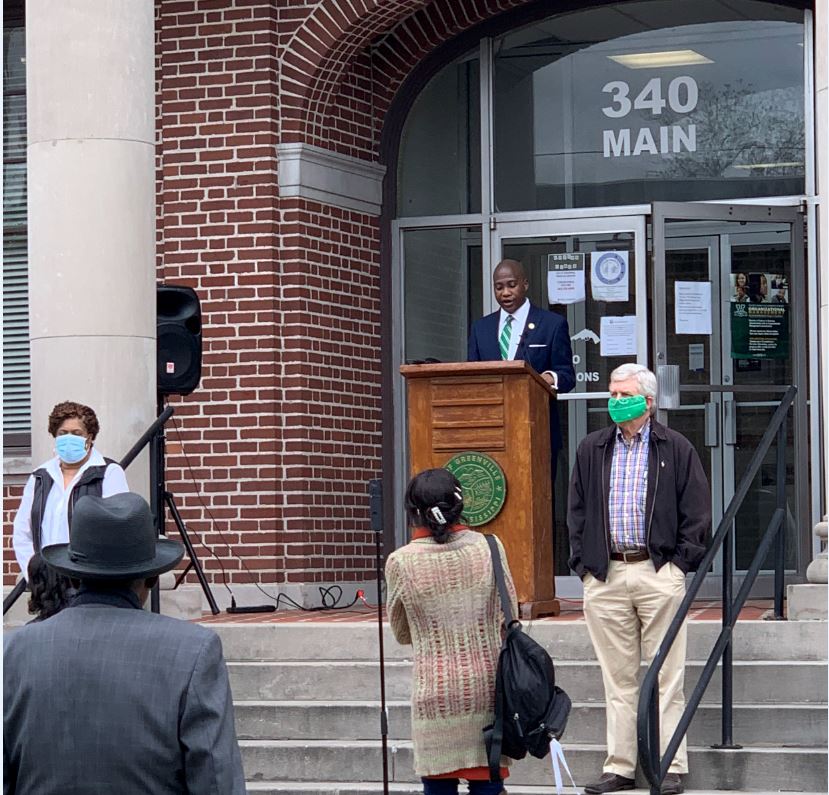
Mayor Errick Simmons said he saw a number of violations with the drive-in services where people were getting out of their cars and hugging people. He also mentioned not having enough cops to police all the churches. It seemed like Temple Baptist and King James became the face of this conflict when they weren’t violating any of the rules. Did he happen to mention the names of any churches he saw violating social distancing?
He didn’t name any churches where he was seeing people getting out of their cars and that kind of thing. The only two churches that I’m aware of that had the cops show up are those two churches. It’s possible that there are others. Those are just the two that I’ve heard of. A lot of people had gone to Zoom or Facebook Live for their services, but I think these two pastors felt it was important to give this parking lot option. Pastor Scott talks about elderly parishioners who don’t use Facebook or Zoom, so they probably wouldn’t be able to watch services that way, so he wanted to give them a different option.
For you personally, do you think anyone is wrong in this situation? Is there a middle ground if people find solace and peace in religion during this trying time, if this is their way to cope? The mayor is looking out for everyone’s health and safety. Everyone’s feelings seem valid.
I mean it’s one of these situations where different people can come to different conclusions. It’s been interesting to see the reactions so far of people who’ve listened. Some people say, “I can totally get what the mayor was doing.” Some people would say “I really side with the pastor.” Other people are somewhere in between, so we really wanted to just tell the story and then leave it up to people as to what they make of it, but hopefully show it in a way where you could hopefully at least understand what happened on both sides of it.
What did Dr. Singh have to say about these drive-in services? Was there a risk, or was it safe like Governor Tate Reeves told Mayor Simmons?
I’m not sure if we talked to him about that or not. … But when we were talking to (Dr. Singh), we were really talking to him about this early moment where he was starting to see things unfold, and that was a little bit before the drive-in service became a controversy.
I think this episode had more of a lighter tone to it. What can people expect as they follow the series along?
I think that we’re going to be telling stories that I don’t think people are hearing anywhere else and that might be surprising, that would be interesting, that would be in some cases sad. But also a lot of what we’re seeing doing this reporting this strange way that we’re forced to do reporting in these times is people really trying to cope with this in really interesting and creative ways. Whether that’s an inmate inside Parchman prison, whether that is a football (player), or whether that is a nurse in the ICU, really what we’re seeing in the Delta is a whole lot of problem-solving and creativity in interesting ways to try to fight this virus, to maintain some sense of normal life. I think that, to me, is standing out more in the reporting than doom and gloom. That this is a story of a time of tremendous trouble, but also tremendous resilience, especially in the stories that we’re telling.
So I hope that when people listen they hear that this is not necessarily a depressing series. We all know, given our own experiences in the last two months or so, all the different ways this can affect us. All the different extremes of emotions we might go through, even in one day about this and how different one person’s experience can be from another. A lot of times, I think, when there’s a big story no matter what it is, there’s rightfully so a lot of touch and focus on the main part of that story. But then sometimes what goes missing and you realize later what hasn’t been documented are all the other ways a big story affected people’s lives, and those were never reported because they weren’t seen as important.
Hopefully, we’re trying to document the ways that life has changed, yes, in medical ways and health ways, but also in other ways as well.
Does this make you want to branch out and do other rural areas?
I think we’re pretty focused on the Delta honestly. I think it’s a place we got to know, living in Mississippi. We got to know a lot of people there, so it’s a place that makes sense for us to report on. I mean I wish that I could go there, that’s the biggest part of all this. We’re so used to being there and just knocking on doors, hanging out and talking to people, so it’s been strange to do this on the phone. I never considered looking at a different place.
Where can people listen to In the Dark: Coronavirus in the Delta?
It’s at inthedarkpodcast.org or you could also go to any place you listen to podcasts and just type in “In the Dark,” and you can find it there.
Correction: Natalie Jablonski’s name was misspelled in the original story and is corrected above. We apologize for the error.

